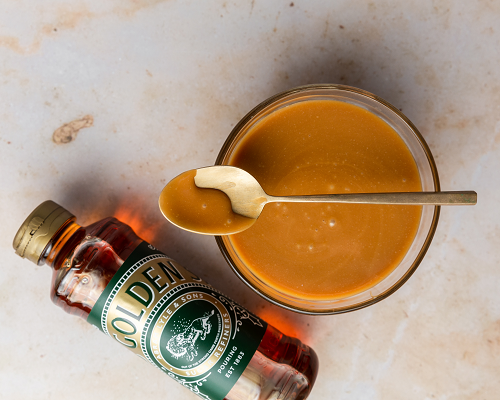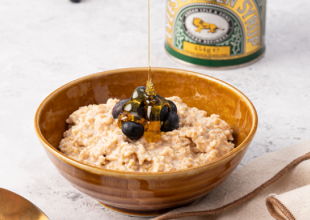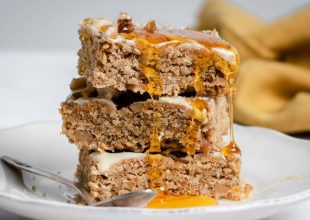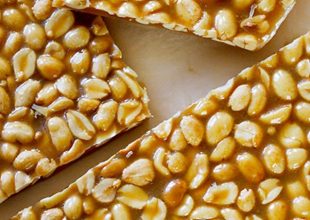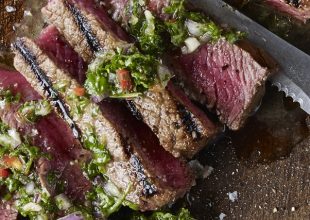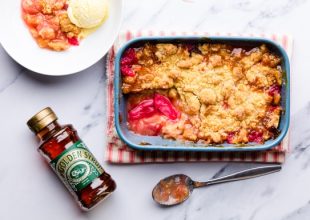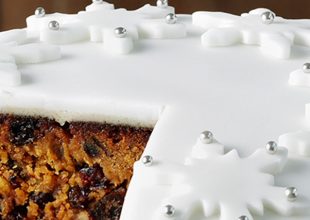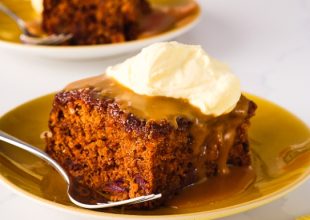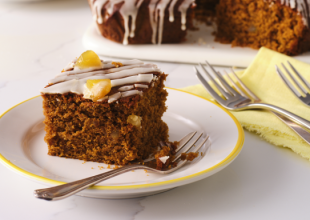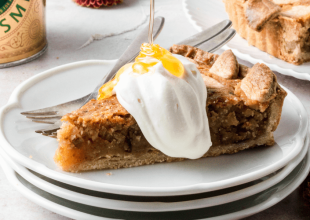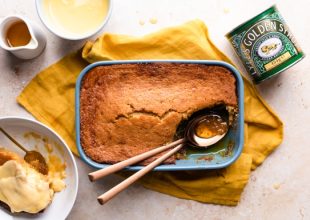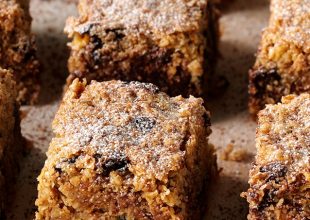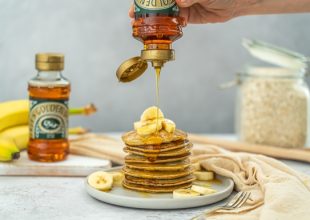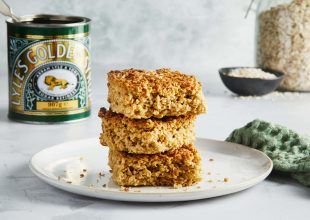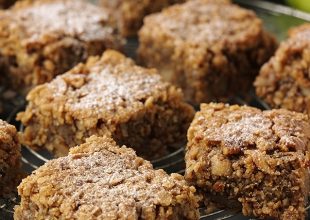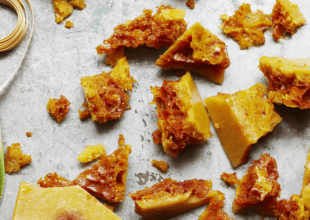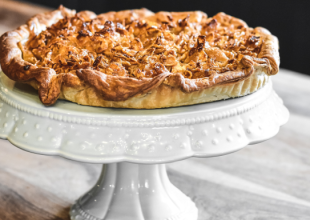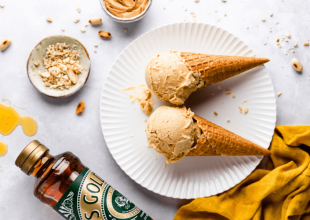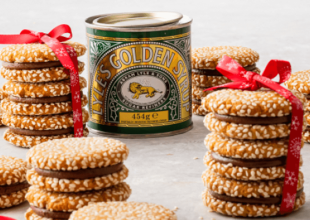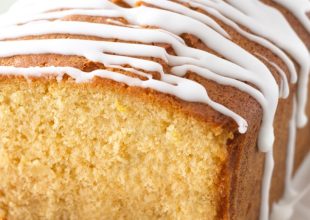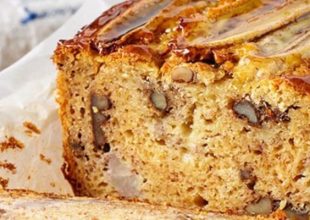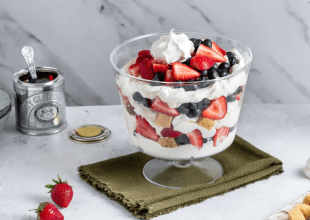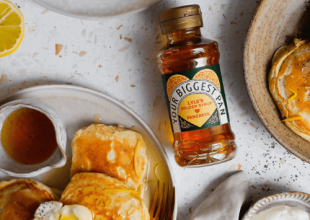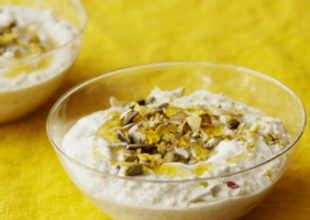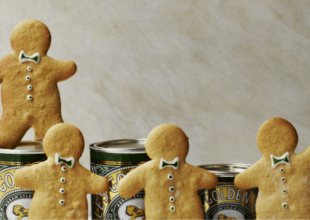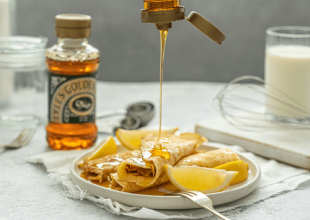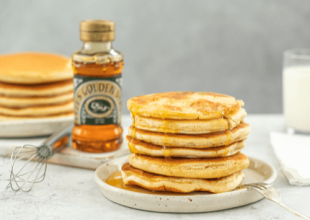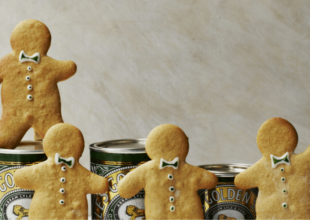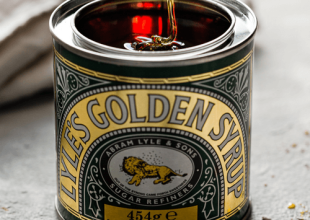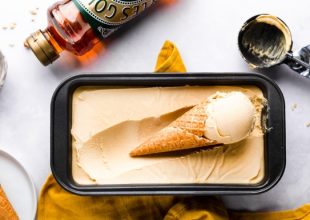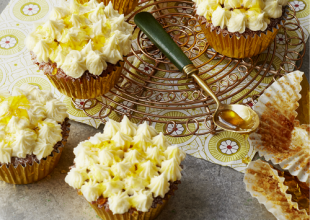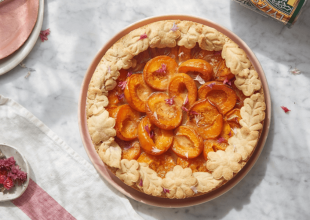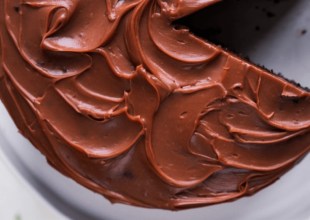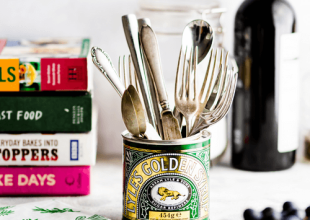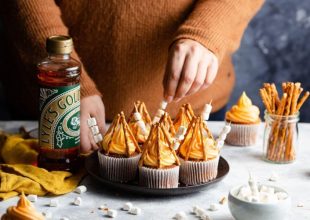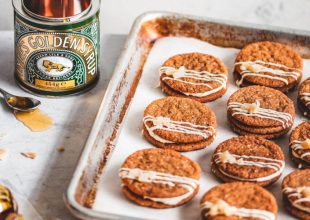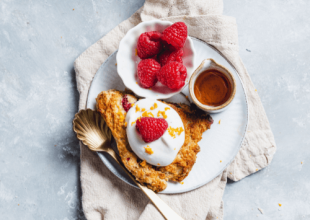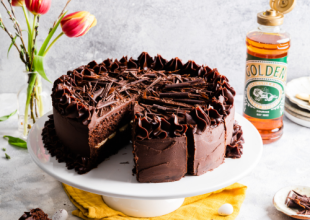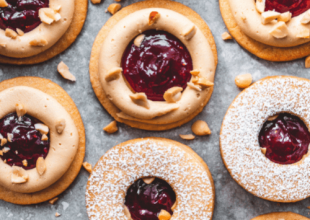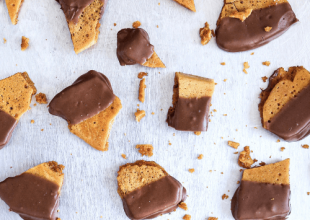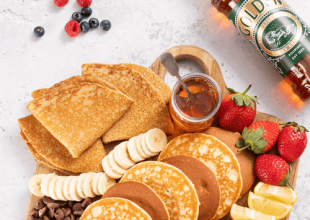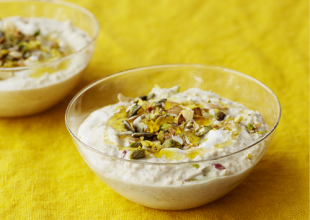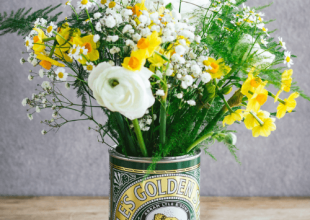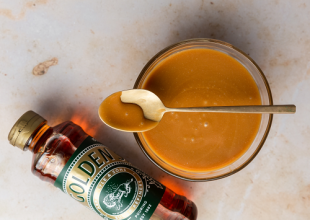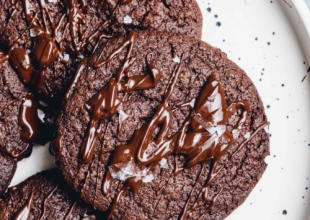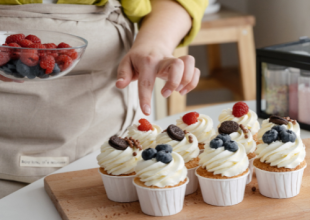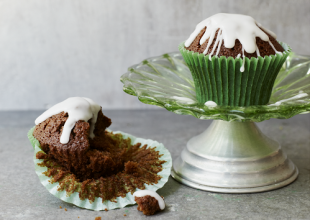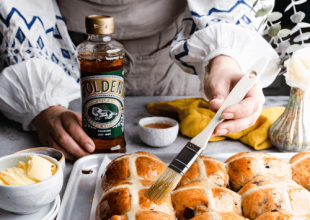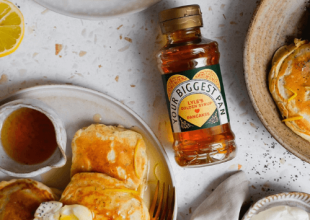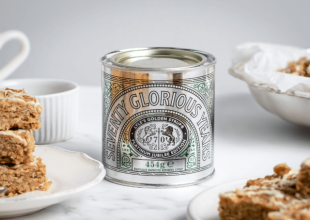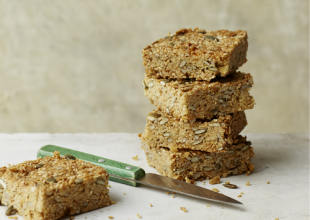Everything You Need to Know About How to Make Caramel
Not to mention, it’s a big favourite amongst the kids and thanks to this handy guide, you’ll find it’s quick and easy to make! If you’ve ever wondered how to make caramel, you’ve come to the right place.
Caramel is made by heating a variety of sugars, and it can be used as a flavouring in puddings and desserts.
In this article, we’ll delve deeper into the art of making caramel, and you’ll be a pro before you know it.
Keen to learn? Here’s what we’ll be going over
What goes into making caramel
Different types of caramel
How to make caramel with Lyle’s Golden Syrup
How to make caramel with sugar
How to thicken caramel
How to incorporate some new flavours into your caramel
Caramel vegan alternatives
How to store caramel
What goes into making caramel?
Different types of caramel are made with the following basic ingredients:
1) Milk, cream, and condensed milk to help make a lovely light-coloured caramel sauce to drip over your desserts.
2) Golden syrup, sugar, and molasses will provide the sweet taste caramel is best known for.
3) Oil and butter help give your caramel a smoother, softer texture which makes coating things i.e., nuts easier.
The milk or condensed milk is used to prevent your caramel from turning to hard candy. If you want your caramel to turn to hard candy, don’t add the milk or condensed milk!
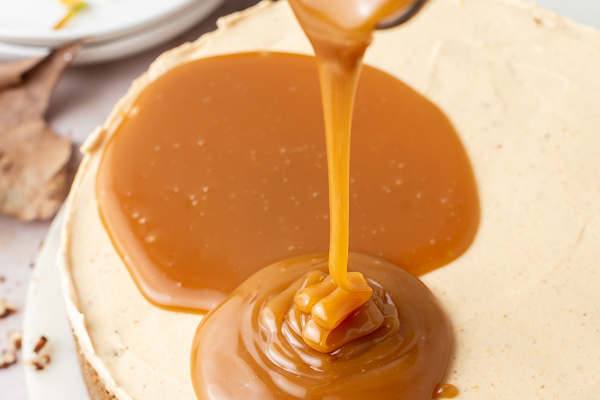
Different Types of Caramel
The beauty of caramel is that not every single one is the same, the sugary based means this sweet sauce is versatile with its flavours and consistency. Toffee, caramel, and butterscotch are 3 classic dishes that all come from a very similar recipe.
But what makes them all different?
Caramel is a type of candy that is created by heating white granulated sugar. Other ingredients such as butter, milk and vanilla are commonly added to produce a beautifully thick, creamy caramel which is used in a variety of sauces, drizzles, candies and classic caramel apples.
Butterscotch is a softer candy than caramel, made by heating butter and brown sugar together. The brown sugar molecules break down and create a richer, deeper flavour than your classic caramel dishes.
Toffee is quite simply butterscotch which has been heated for longer to reach the hard-crack sugar stage. While butterscotch is cooked to a soft-crack stage, toffee is created by cooking that same mixture for longer to reach the hard-crack stage.
Caramel can be found in the base of some of the most delicious recipes and learning how to make it from scratch can give that authentic taste we’re all looking for. You can use our caramel recipes to create a selection of Lyle’s recipe’s such as:
How to make caramel with Lyle’s Golden Syrup
Caramel Recipe with Lyle’s Golden Syrup
1) 150g (5oz) Lyle’s Golden Syrup
50g (2oz) unsalted butter
125g (4.5oz) Tate & Lyle Soft Brown Sugar
150ml (5floz) double cream
Caramel can be made in 3 very simple steps:
First, mix the butter and sugar in a small pan and then slowly dissolve over a low heat for 6-8 minutes, stirring occasionally.
Continue to cook on low heat for a further 5 minutes, then very slowly add the cream and cook for another 1-2 minutes until the mixture has slightly reduced (thickened).
You can then remove the pan from the heat and allow the mixture to cool at room temperature.
To make a chocolate caramel sauce you can stir in chopped chocolate and mix until the chocolate is fully melted. By adding dark chocolate, you can add a super-rich and deep flavour which is perfect for those chocolate lovers out there. Don’t worry if you’re not a fan of dark chocolate, you can always add milk chocolate instead.
Fancy a strawberry caramel sauce? Cook some fresh strawberries with a little bit of water and lemon juice and puree until smooth. Once the sugar has melted in your caramel making process you can stir in the prepared strawberry puree for a fruit burst of flavour.
How to make caramel with sugar
There are two ways of making caramel, dry and wet. The dry method involves heating sugar in a dry pan until it liquifies and browns. This process involved a lot of attention as the sugar can darken quickly and less evenly. The wet process of making caramel involved moistening the sugar in the pan with a little water, the water helps distribute the sugar to promote even browning.
You may choose to use the wet method if you wish to incorporate different flavours into the caramel. The wet method allows for this as the water prolongs the total time the sugar is heated giving your flavours more time to develop. This method also allows for more control over the colouring of the caramel.
Little tip: if your caramel crystallises you can remove the mixture from the heat, add a few tablespoons of water, return it to the heat, and stir until the crystals dissolve before continuing.
(200g) Caster sugar
¼ tsp. sea salt
60ml water
60ml double cream
56.7g / 4tbsp of butter (cubed)
Method:
Over a medium heat, add sugar and salt and cover with water, then bring this mixture to simmer over a medium heat, stirring occasionally until the sugar is dissolved for about 5 minutes.
Increase the heat to medium-high and cook until deeply golden and without stirring for another 4-5 minutes.
Once it’s a deep copper colour, turn off the heat immediately and stir in the cream and butter.
Finally, let the mixture cool slightly in the pan and then transfer to a container to cool completely.
Want to incorporate some new flavours into your caramel?
Now you’ve perfected the caramel making process you might be wondering how you can take it to the next level. We’ve highlighted some flavour variations to help get your imagination going:
Salted caramel
Bourbon caramel
Chocolate caramel
Almond caramel
Blood orange caramel
This is to list just a few different flavour variations – as long as you can find the flavour you’ll be able to add it to your caramel.
What’s better for making caramel – brown or white sugar?
It depends on what you want your caramel to turn out like, if you’re wanting to create a lighter shade of brown, orange then you can substitute the brown sugar out for white sugar. Most people find that using brown sugar allows for more flavour. Just keep an eye out not to burn it.
Caramel vegan alternatives
For those of you that follow a vegan diet, we’ve created a vegan alternative recipe to fulfil your sweet tooth. We’ve made sure that the taste and texture resemble traditional caramel, so we’ve got your cravings covered.
Seeing as Lyle’s Golden Syrup is already vegan we just needed to swap out the butter and milk.
113g vegan butter
200g light brown sugar
150g cup of golden syrup
3oz full-fat coconut milk
¼ teaspoon sea salt
1 teaspoon vanilla extract
How to thicken caramel
If you find that your caramel is too thin, then you can continue to simmer the caramel on a medium heat for 5-10 minutes to thicken it. Bear in mind that your caramel will continue to darken at this point, so it’s important to keep a close eye on it.
Keep in mind as well that the caramel will significantly thicken once it has been completely cooled. So, if you find that your caramel is too thick, you can thin the mixture by stirring a tablespoon or two of heavy cream back into the mixture.
You can test to see whether your caramel is done by having a bowl of cold water (we recommend adding ice cubes if you have them to hand) and then using a spoon, remove some of the mixture from the pan, immerse the spoon into the cold water, moving the spoon and then remove from the water and test the caramel with your fingers to check if it is done.
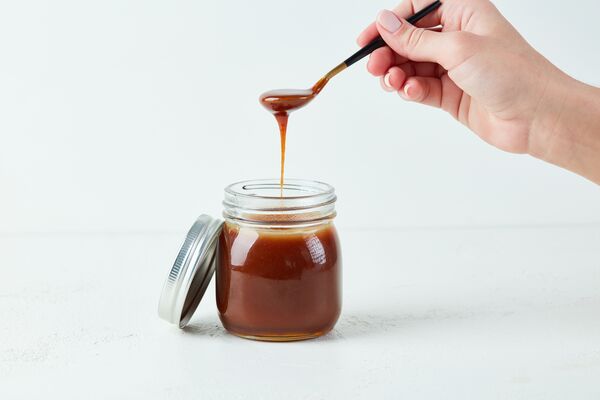
How to store caramel
Caramel can be stored in the refrigerator in an airtight container for up to three weeks once it has been made. Your caramel will be safe at room temperature on things like cakes or brownies for up to 3 days. You can also freeze your sauce, which will last for up to 3 months.
Don’t forget that caramel is an extra-delicious addition to a lot of already-tasty desserts, such as:
…to name just a few!
We hope this guide has helped you make the most scrumptious caramel you’ve ever tasted! Now that you know how to successfully make caramel like a pro, be sure to pass this guide along to your family and friends!

